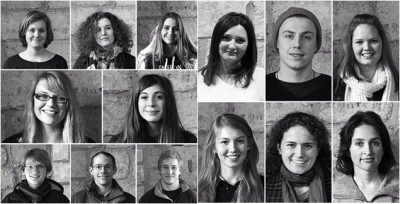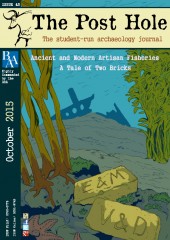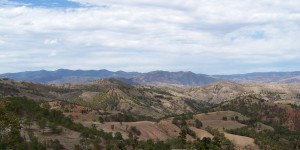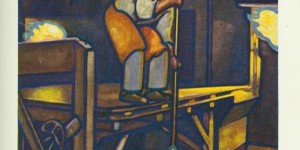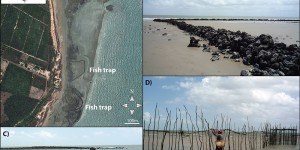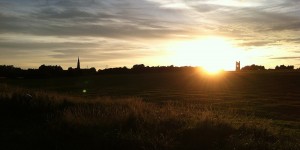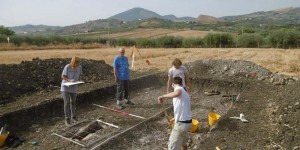It is at a rather unusual time in The Post Hole's calendar that I find myself addressing you in my final editorial. This unconventional timing is the result of many events, including dissertations, flat relocations, being away from the world of 21st century communications for four months, and a rather disagreeable piece of technology upon which Issue 45 was stored! As a result, this issue has been produced by the 2014-2015 team, but will be published by the 2015-2016 team, who I will come back to later.
Firstly, I would like to reflect on the time I have spent as Editor-in-Chief of The Post Hole. Over the past year we have achieved a lot in terms of public outreach and accessibility. Our social media numbers have soared, particularly impressive are the number of Facebook likes, which have increased by a huge 244% from July 2014 to mid-October 2015. This was a fabulous platform for us to advertise the main focus of our launch of TPHExtra, TPHmeets (https://www.theposthole.org/tphextra). This video interview series is a real high of the year and I would like to thank everyone involved, particularly Zack Ferritto Goodall, who contributed greatly to this feature. If you still have not seen the interviews I strongly recommend you visit The Post Hole's YouTube channel and take a look. Some of the interviewed archaeologists include Paul Pettitt, Jane Grenville and Barry Taylor. Another high point was the website redesign and the re-launch which corresponded with the first issue this team put together. This was facilitated by Pat Gibbs, I would like to personally thank Pat for all the amazing work he does to help all of the ever changing faces of The Post Hole!
Secondly, on the theme of thanking people, Jessica Hand and Alexandra Drosinaki graduated, along with myself, this July and will therefore be leaving The Post Hole team. I would like to thank them both. Jess worked hard (sometimes tirelessly) as Submissions Editor to complete the first edit of article, as well as being the main correspondent with our authors. Alex has been The Post Hole's Web Assistant for the past two years and has worked closely with Pat to ensure each issue is correctly formatted and appears on The Post Hole's website. I would like to thank them both for their contributions and wish them all the best for their future endeavours.
Next, I would like to introduce you to the new Editor-in-Chief of The Post Hole, Freya Lawson-Jones. Freya is a third year reading for a BA in Archaeology and has been a member of the team for over a year now. I have every faith she will continue the more interactive elements of The Post Hole which we have worked on over the past year, whist maintaining the journals academic reputation. Freya was an ideal candidate for the position as she has been an editor and has also worked with the interview team, meaning she has a broad and thorough understanding of the workings of The Post Hole. I would like to wish her every success in this new role.
As is always customary, I shall move on to the summary of the articles featured in Issue 45.
The first article is a submission from our regular contributor, Arnaud F. Lambert. In this article, Lambert examines the art visible at the site of the Cauadzidziqui rock shelter. The article contains incredible images which show the fabulous mural and rock painting which can be seen at this unusual site in the Mexican state of Guerrero.
This Issue release is quite a special one for me, not only because it is my last, but because it includes a contribution from my Father, Jeffery Green, who has supported me immensely over the three years of my undergraduate degree and continues to as I begin my Master's course. This article demonstrates how one small find and a spark of enthusiasm can lead to a wealth of information of archaeological interest. The article concerns yellow bricks which can often be found off the coastline of Staithes, North Yorkshire, and attempts to tell the story as to how they came to be washed up on the beach. The cover of this issue designed by Alicyn Murphy is based around this article.
The next article comes from a number of researchers hoping to examine the potential of coastal archaeology to increase understanding of the sustainability of artisanal fisheries in Brazil. Andre C. Colonese et al., hope to include the local fishing communities to assess the impact of fish traps on a coastal community.
Sophia Calugay questions the justification of excavation in her article ‘The destructive nature of archaeology'. Calugay uses examples to show that the information gained by archaeological excavation is worth more than the destruction wreaked. A discussion of the wealth pre-excavation techniques follows.
Have you ever wondered what it is like to take part in an archaeological field school? Well, the next article is an honest and personal account of the time Ashely Green spent at the Black Friary in Trim, Ireland. The piece contains specific site descriptions and interpretations.
Finally, Alexandra Drosinaki has compiled the excavation experiences of three students from the University of York who had the incredible opportunity to work on an archaeological dig in Sicily with Professor Martin Carver, well known for his direction at Sutton Hoo. Each account gives a different take on the month spent in Sicily and once again shows that archaeology is never experienced in the same way by different people.
And so with that I would like to urge you all to continue supporting The Post Hole by sending in your articles to submissions [at] theposthole.org and I bid you all a fond farewell. Last, but not least, I would like to thank everyone in the 2014-2015 team for their support, creativity, commitment and enthusiasm while I have been Editor-in-Chief (Fig. 1). Good luck to those continuing next year.


